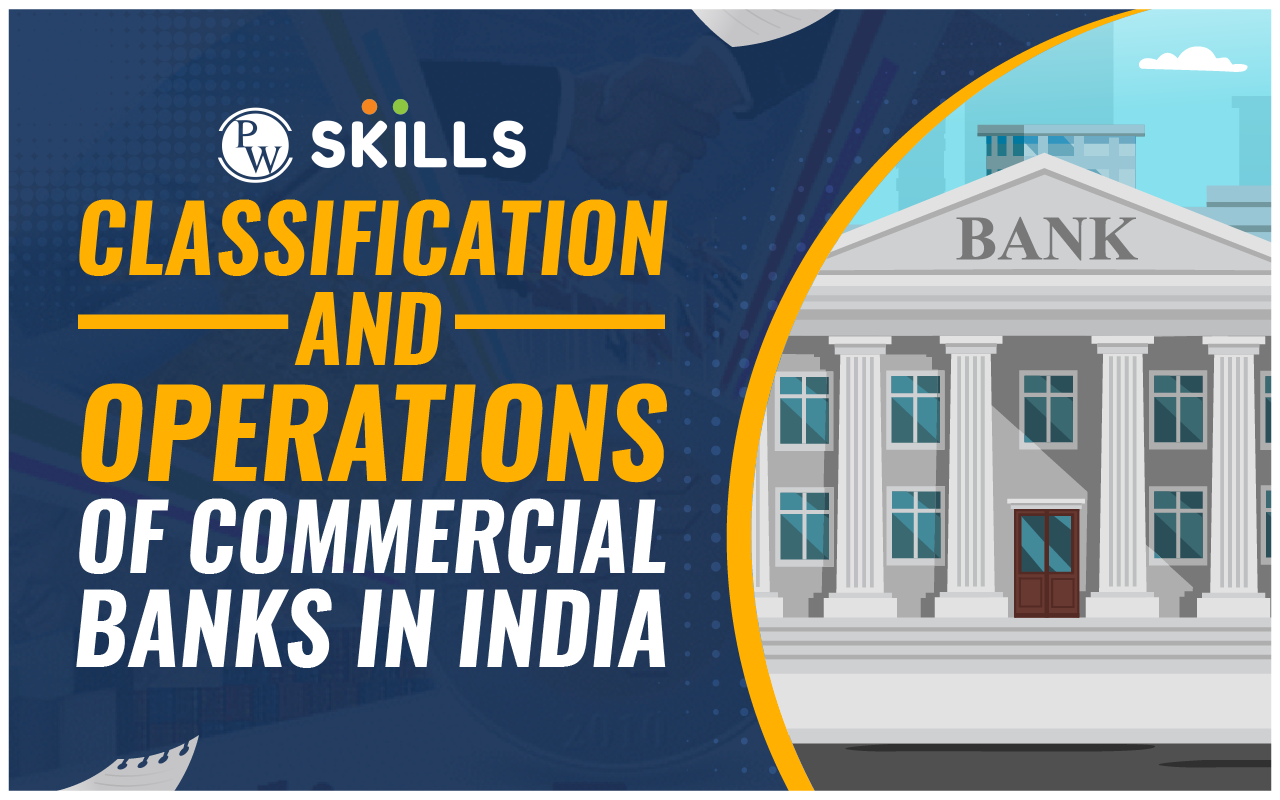“Commercial banks in India include public sector, regional rural, and private sector banks. We will know more about commercial banks in the article below.”
Types of Bank in India: A bank is a financial institution which accepts money from the public for the purpose of lending or investing the money. The loans provide banks interest, and deposits provide user interest earnings.
Commercial banks in India are financial organisations which provide a wide range of banking services, such as credits, deposits, small and big loans, and other banking facilities. The commercial banks in India are organised by the Reserve Bank of India (RBI).
The two main operations of commercial banking in India are deposits and money credit to small and big organisations. Let us read more about the types of banking services in India.
What are Commercial Banks in India

Commercial banks in India provide many important banking facilities such as deposits, loans, account service monitoring, Certificate of Deposits (CDs), and saving accounts. Some important facts about commercial banks in India are given below.
- Commercial banks in India offer loans and deposit accounts for individuals, small businesses and large size businesses.
- They also accept small deposits and then convert them into huge capital, which can be given to borrowers for a short period of time.
- They also accept deposits in the form of saving accounts.
- They earn their income through interest earned from loans, penalty fees, etc.
- Most of the commercial banks are present in all major cities. However, the majority of them are available online, too.
- They contribute to the country’s economy by creating capital, credit, and liquidity.
- Examples: SBI, PNB, ICICI Bank, etc., are some of the leading commercial banks in India.
Also read: Indian Banking Sector Overview: Tracing its role and development
Classification of Commercial Banks in India
There are many factors on which classification of banks in India are carried out. Let us understand the classification of Banks in India below.
1. Classification On Statutory Basis
- Scheduled Bank: These banks are registered with the RBI Act, 1934, under the second schedule. To qualify for the scheduled bank category, a bank must have a minimum capital of 5 lakh INR and above. Also, banks must satisfy the central bank that they do not pose any negative impact or harm to the depositors.
Some major types of scheduled banks are nationalized, regional Rural, Foreign, and other private banks.
- Non-Scheduled Bank: The banks are not listed under the list of scheduled banks. These banks are not registered with the RBI Act of 1934. These banks are not eligible for any loans from the RBI for their daily activities.
However, under emergency conditions, the RBI can lend them loans. They do not have many facilities, unlike the Schedules banks. Example: All local banks are under Non-Scheduled Banks.
Scheduled Banks Facilities Offered By RBI
The scheduled banks are registered with the RBI, which offers them many facilities. Some of them are given below.
- They can take loans from the RBI at bank rate.
- They can automatically acquire membership in the clearing house.
- Scheduled banks get the facilities to rediscount first-class exchange bills from RBI.
Also read: BFSI Full Form, Banking Financial Services and Insurance
Types of Commercial Banks in India
Commercial banks are regulated under the Banking Regulation Act 1949. These banks offer loans to the government, the public, and small/big corporate companies. They are profit banking that makes profit by the interest rates they charge on loans.
There are four major types of commercial banks in India:
1. Public Sector Banks
Public sector banks are national banks whose majority stakes are held by the government. They are one of the biggest banks in India accounting for more than 75 percent of total banking services in India. Examples: SBI, PNB, Union Bank of India, Syndicate bank, etc. There are a total of 20 nationalised banks in India.
| Commercial Banks in India: Public Sector Banks |
|
2. Private Sector Banks
Private banks are the banking sector whose majority of stakes are held by private shareholders. The private sector banks work under the rules and regulations imposed by the RBI. However, they are not run by the government, and the interest rates at these banks are higher than those at public sector banks.
Examples: ICICI Bank, HDFC Bank, Axis bank, Kotak, Mahindra bank, etc.
| Private Sector Banks in India |
|
Also check: Why are Private Banks ideal to start your Banking Career?
3. Foreign Banks
The headquarters of Foreign banks are situated in foreign countries. However, they operate in India. These banks also need to follow the rules and regulations imposed by the government of India as well as their home countries. Check some of the major foreign bank lists in the table below.
| Commercial Banks in India: Foreign Banks |
|
4. Regional Rural Banks
These banks were established with the objective of providing credit to weaker sections in rural areas, such as labourers, farmers, small enterprises, etc. They operate at rural levels in different states of India. It provides banking and financial services to rural and urban areas. It also provides disbursement of different schemes run by the government for their welfare, such as pensions, MGNREGA, PMJJBY, PM Jan Dhan Yojna, etc.
FAQs
What are commercial banks in India?
Commercial banks in India offer loans and deposit accounts for individuals, small businesses and large businesses. Learn more about them in the article given above.
How many types of commercial banks in India?
There are four major types of commercial banks in India.
Public sector banks
Private banks
Foreign banks
Regional Rural banks
What is the role of commercial banks in India?
Commercial banks in India offer deposits, credit, loans, and payment services to individuals and businesses in our country.
How many nationalised public sector banks are in India?
There are a total of 20 public sector banks in India. Check the list in the article.
What are the top four Foreign commercial banks?
The top four commercial banks are JPMorgan Chase, Wells Fargo, Citibank, and Bank of America.




